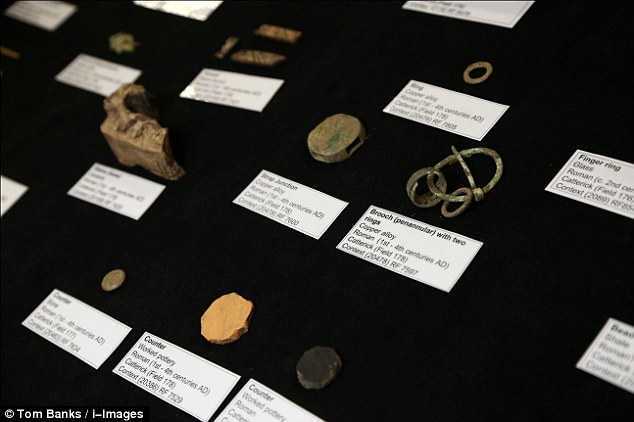177,000 Roman artefacts found under the A1
A number of exciting road works on a major road is not the first place you would expect to find a trove of Roman treasures, but that is exactly what people have discovered in a £ 380 million upgrade to a 12-km stretch of the A1 between Leeming Bar and Barton in Yorkshire have discovered. Archaeologists have now unearthed a staggering 177,000 artifacts from a Roman settlement dating back to 60AD that was on the site.
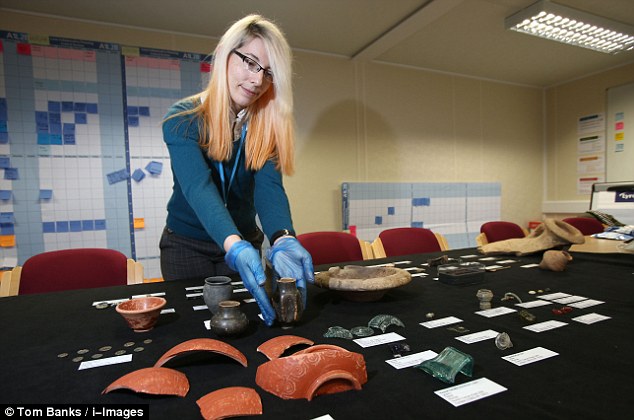
They have said the discovery is helping to rewrite history and providing new insights into life in Britain during the Roman occupation. And archaeologists have described the new discoveries as ‘re-writing history’.
Among the finds to have been recovered are a rare Roman brooch and a decorative miniature sword.
Archaeologists have also found the remnants of the town close to Scotch Corner, North Yorkshire, which could prove to be the earliest Roman settlement in the region. The Romans are thought to have only come to York a decade later than the settlement is thought to have been built.
Dr Steve Sherlock, who has led the archaeological project, said: ‘We’re effectively re-writing the history books because we didn’t know it was there or that there was anything so early.
‘Conventional wisdom tells us that in AD71 the Romans came over the Humber and settled in places like York and near Boroughbridge – but this site is even earlier.’
Dr. Sherlock described discovering traces of timber buildings, glass vessels, beads, and even remnants of crops as ‘quite spectacular’.
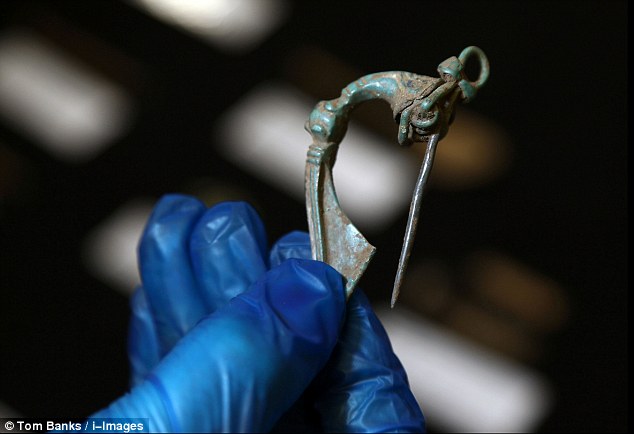
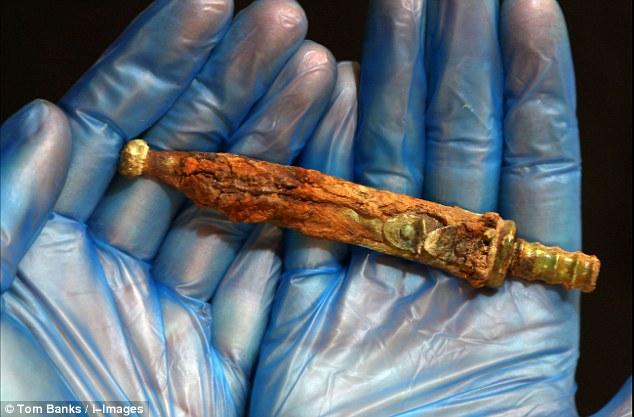
He said: ‘We didn’t just find one building, but a sequence of buildings going back hundreds of years, that nobody knew existed.
‘We can understand the impact of the site because of the amount of time it was occupied – over 300 years.’
Over the past two years, over 60 archaeologists have been working along the old Roman route known as the Great North Road, which ran adjacent to the current A1.
Dr Sherlock explained that, although they expected to find Roman deposits the ‘quality, quantity and extent went beyond expectations’.
Further discoveries have also been made at Catterick, North Yorks., which was occupied by the Romans around AD80.
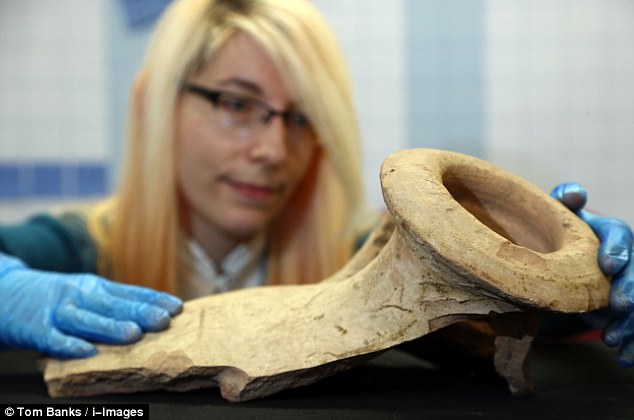
Here a Roman town called Bainesse, just south of Catterick, has previously been found and much knowledge has now been gained following the excavation of a cemetery with 246 burials dating back to the first and third century.
Some people were buried with pots, beads, jewellery and even hobnail boots.
The bones will now be analysed to determine their age, sex and cause of death which archaeologists hope will reveal a number of exciting things.
The team are due to leave Catterick later this month but will continue to study and verify the findings – some of which will go to the York Museum Trust.
Dr. Hannah Russ, from Northern Archaeological Associates, said: ‘The quality and preservation of the artifacts and environmental remains from this scheme is outstanding.’
